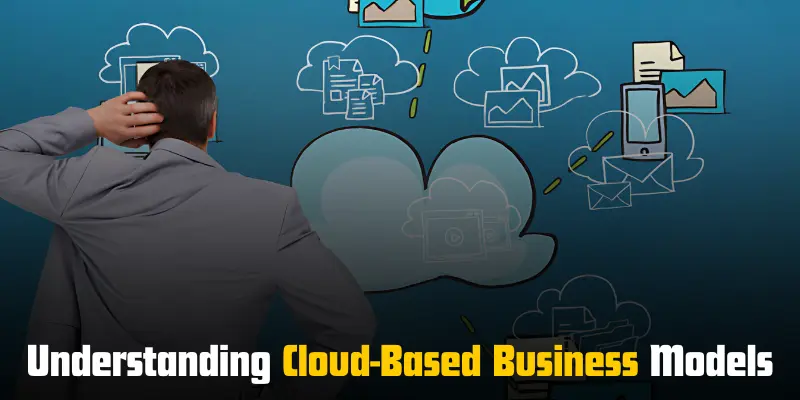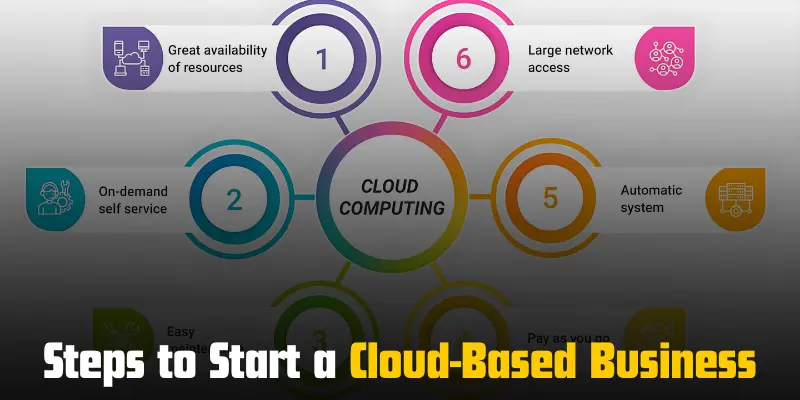Cloud Business Made Easy: Step-by-Step Guide to Get Started!
Published: 24 Mar 2025
Starting a business is tough—high costs, complicated setups, and constant maintenance. But what if you could skip the expensive office, reduce IT headaches, and run everything online? That’s exactly what a cloud-based business offers. If you’re struggling with startup costs or technical barriers, this guide will show you how to start a cloud-based business the easy way.
Introduction
Starting a business is easier than ever, thanks to cloud technology. But how do you actually start a cloud-based business? Whether you want to create an online service, sell digital products, or offer cloud-based tools, the possibilities are endless.
A cloud-based business runs entirely online. This means you don’t need a physical office, expensive hardware, or big upfront costs. Many successful companies, like Dropbox and Zoom, started in the cloud and grew into global brands.
In this guide, we’ll walk you through the steps to start a cloud-based business—from choosing an idea to launching and growing your company.
Understanding Cloud-Based Business Models

Cloud-based businesses operate entirely online, making them cost-effective, scalable, and flexible. But not all cloud businesses are the same. Let’s explore the different types and how to choose the right one for you.
Types of Cloud Businesses
Each cloud business model serves a different purpose. Here are the main types:
Software as a Service (SaaS)
SaaS businesses offer software that customers can use online without downloading anything.
- Examples: Google Docs, Dropbox, Canva.
- Best for: Entrepreneurs who want to create tools for businesses or individuals.
- Revenue Model: Subscription-based (monthly or yearly).
Platform as a Service (PaaS)
PaaS provides a platform where developers can build, test, and deploy applications.
- Examples: Google App Engine, Microsoft Azure, Heroku.
- Best for: Tech-savvy entrepreneurs who want to help developers create apps.
- Revenue Model: Pay-as-you-go or subscription-based.
Infrastructure as a Service (IaaS)
IaaS provides cloud-based computing resources like servers, storage, and networking.
- Examples: AWS, Google Cloud, IBM Cloud.
- Best for: Businesses that need large-scale cloud infrastructure without maintaining physical servers.
- Revenue Model: Pay-as-you-use (charged for computing power and storage).
eCommerce & Online Marketplaces
Selling products or services online using cloud platforms.
- Examples: Shopify, Amazon, Etsy.
- Best for: People who want to sell physical or digital products online.
- Revenue Model: Direct sales, commissions, or subscriptions.
Remote Services & Cloud Consulting
Providing online services such as consulting, coaching, or virtual assistance.
- Examples: Online courses, cloud security consulting, remote IT support.
- Best for: Freelancers, coaches, and professionals offering expertise.
- Revenue Model: Hourly fees, service packages, or memberships.
Examples of Successful Cloud Businesses
Many businesses have grown into industry leaders by leveraging cloud technology. Here are some well-known examples:
- Dropbox (SaaS) – A cloud storage service used by millions worldwide.
- Zoom (SaaS) – A video conferencing platform that became essential for remote work.
- Shopify (eCommerce PaaS) – A cloud-based platform that helps businesses set up online stores.
- AWS (IaaS) – Amazon Web Services provides cloud infrastructure for businesses.
These businesses started small but scaled quickly because of the cloud’s flexibility.
How to Choose the Right Cloud Business Model
Picking the right model depends on your skills, interests, and market demand. Here’s how to decide:
- Are you good at software development? → Consider SaaS or PaaS.
- Want to sell products online? → eCommerce platforms like Shopify are best.
- Do you have expertise in a specific field? → Start a remote consulting or service-based business.
- Looking for long-term scalability? → IaaS offers cloud infrastructure for large businesses.
Steps to Start a Cloud-Based Business
Starting a cloud-based business is exciting, but where do you begin? Follow these simple steps to turn your idea into a successful online business.
Step 1: Identify Your Business Idea
Your idea is the foundation of your cloud business. Choose a niche that is profitable and in demand.
- Find a profitable niche – Look for areas like cloud storage, online courses, or remote work tools.
- Research competition and demand – Use tools like Google Trends and industry reports to see if people need your service.
- Solve a problem – The best business ideas come from solving real-world problems.

Step 2: Choose the Right Cloud Infrastructure
Your business will need a reliable cloud platform. Pick the right type based on your needs.
- Public vs. Private vs. Hybrid Cloud – Public clouds (AWS, Google Cloud) are cost-effective, private clouds are secure, and hybrid clouds combine both.
- Recommended platforms – AWS, Google Cloud, and Microsoft Azure are the most popular options.
- Example: A startup using AWS to host an online design tool for freelancers.
Step 3: Plan Your Business Model
Decide how you will make money and attract customers.
- Choose a revenue model – Will you charge a subscription, pay-per-use, or offer a freemium plan?
- Pricing strategy – Look at competitors like Spotify (freemium) or Dropbox (subscription-based).
- Think about scaling – A strong model will help you grow without increasing costs too much.
Step 4: Build Your Cloud-Based Product or Service
Develop your product using the right tools and test it before launch.
- Hire developers or use no-code tools – Platforms like Bubble and Zapier help build products without coding.
- Test before launch – Use beta testing to get feedback from real users.
- Example: A startup launching a beta version of its app to gather user feedback before a full release.
Step 5: Set Up Security and Compliance
Keeping customer data safe is essential in cloud businesses.
- Data security is a priority – Cybersecurity threats can harm your business and customers.
- Follow compliance rules – If handling sensitive data, follow GDPR (for Europe) or HIPAA (for health data).
- Use best security practices – Enable SSL certificates, two-factor authentication, and encryption.
Step 6: Market and Launch Your Business
Get the word out and attract customers to your cloud-based service.
- Build a website and social media presence – A professional website and active social media help build trust.
- Use content marketing and SEO – Writing helpful blogs and optimizing for search engines can attract organic traffic.
- Run ads and promotions – Google Ads and Facebook Ads can bring in early customers.
- Example: A cloud-based fitness coaching business using Instagram marketing to gain clients.
Step 7: Scale and Grow Your Business
Once your business is running, focus on automation and expansion.
- Use automation and AI – Automate repetitive tasks like customer support and data analysis.
- Expand into new markets – Offer services in multiple countries or to different industries.
- Example: Slack started as a gaming tool but pivoted into a global workplace communication app.
Conclusion
So guys, in this article, we’ve covered how to start a cloud-based business in detail. The best approach is to start lean—pick a niche, choose the right cloud platform, and focus on a business model that works. If you’re new to cloud technology, I recommend starting with a service-based business (like consulting or remote services) before diving into SaaS or IaaS. With the right planning, your business can grow fast! Now it’s your turn—take action and launch your cloud business today!
FAQs About Starting a Cloud-Based Business
A cloud-based business operates entirely online using cloud technology. This means no physical servers or offices are needed, making it cost-effective and scalable. Examples include SaaS tools, online stores, and remote consulting services.
Not necessarily! Many cloud platforms offer no-code or low-code tools to help beginners. However, if you’re creating software (like a SaaS product), you may need a developer’s help.
The cost depends on the type of business. A basic service-based cloud business can start with as little as $100, while a SaaS or IaaS business may need thousands for development and hosting. Most platforms offer pay-as-you-go pricing to keep costs low.
It depends on your needs! AWS, Google Cloud, and Microsoft Azure are great for hosting apps, while Shopify is ideal for eCommerce, and Zoom or Teachable work well for online services. Choose one that fits your business model.
You can earn through subscriptions, pay-per-use models, ads, or direct sales. For example, SaaS businesses charge a monthly fee, while eCommerce stores sell products. Choose a revenue model that matches your business type.
Use SSL certificates, strong passwords, and two-factor authentication to protect customer data. Follow regulations like GDPR (for Europe) or HIPAA (for health data) if necessary. A secure cloud provider also helps reduce risks.
The main challenges are technical issues, data security, and competition. But with the right tools and planning, you can overcome these. Focus on customer service, automation, and a solid marketing strategy.
It depends on the business! A freelancer offering cloud-based services can work solo, but SaaS or eCommerce businesses may need developers, marketers, or customer support. You can start alone and hire as you grow.
Bonus Points
- Start with a Lean Approach – Don’t overcomplicate things. Launch a minimum viable product (MVP) first and improve based on customer feedback.
- Leverage Free Cloud Tools – Use free tiers of AWS, Google Cloud, and Azure to save costs. Many platforms offer free credits for startups.
- Prioritize User Experience (UX) – A fast, simple, and secure platform attracts and retains customers. Avoid complex designs that confuse users.
- Automate as Much as Possible – Use AI chatbots, email automation, and CRM tools to reduce manual work and improve efficiency.
- Offer a Free Trial or Freemium Plan – If you’re launching a SaaS business, a free trial helps users test before they buy. This builds trust and increases conversions.
- Use Strong Cybersecurity Measures – Regularly update software, use encryption, and enable multi-factor authentication (MFA) to protect user data.
- Focus on Recurring Revenue – Subscription-based models provide steady cash flow compared to one-time sales. This is why SaaS businesses thrive.
- Build a Community Around Your Business – Engage with your audience on social media, forums, or webinars. Happy customers become loyal advocates.
- Analyze Data to Make Smart Decisions – Track metrics like customer retention, website traffic, and sales conversions. Use tools like Google Analytics and HubSpot to understand what’s working.
- Keep Learning and Adapting – The cloud industry evolves fast! Stay updated with new trends, technologies, and customer needs to stay ahead of competitors.

- Be Respectful
- Stay Relevant
- Stay Positive
- True Feedback
- Encourage Discussion
- Avoid Spamming
- No Fake News
- Don't Copy-Paste
- No Personal Attacks

- Be Respectful
- Stay Relevant
- Stay Positive
- True Feedback
- Encourage Discussion
- Avoid Spamming
- No Fake News
- Don't Copy-Paste
- No Personal Attacks



